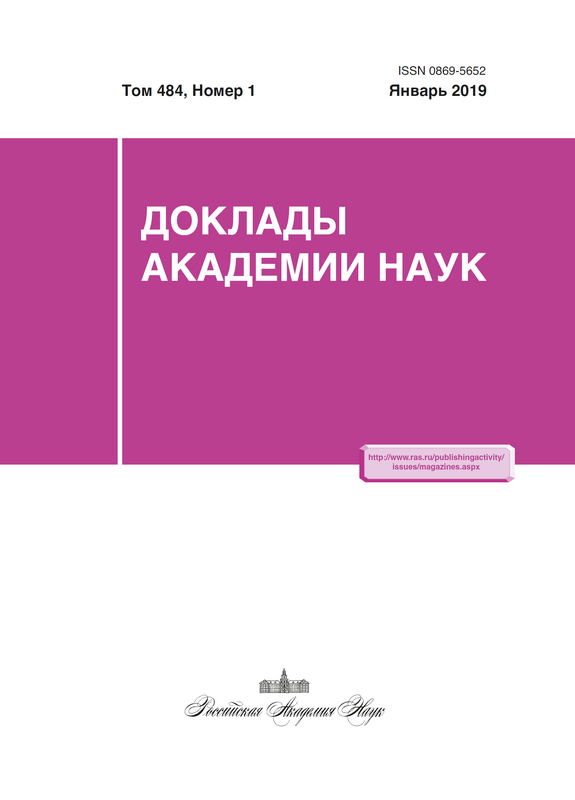Deep velocity structure of the southern edge of the Siberian Craton and Baikal Rifting
- Authors: Mordvinova V.V.1, Кobelev М.М.1,2, Chritova М.А.1,2, Тurutanov Е.C.1, Коbeleva Е.А.1,2, Тrynkova D.S.1, Tsydypova L.R.3
-
Affiliations:
- Institute of the Earth`s Crust of the Siberian Branch of the Russian Academy of Sciences
- Baikal Branch of the Federal Research Center "United Geophysical Service" of the Russian Academy of Sciences
- Geological Institute, Siberian Branch of the Russian Academy of Sciences
- Issue: Vol 484, No 1 (2019)
- Pages: 93-97
- Section: Geophysics
- URL: https://journals.eco-vector.com/0869-5652/article/view/12150
- DOI: https://doi.org/10.31857/S0869-5652484193-97
- ID: 12150
Cite item
Abstract
The velocity structure of the southern edge of the ancient Siberian craton has been modeled to an 80-km depth based on teleseismic records of a P-receiver function method (P–S). The correlation between the deep and the surface structure determined through modeling is indicative of the submeridional convergence of the south-western edge of the Siberian craton with the Central Asian mobile belt. A sublatitudinal crust extension in the contact zone caused by such convergence may initiate Baikal rifting at the craton’s southeastern edge.
About the authors
V. V. Mordvinova
Institute of the Earth`s Crust of the Siberian Branch of the Russian Academy of Sciences
Author for correspondence.
Email: mordv@crust.irk.ru
Russian Federation, 128, Lermontova street, Irkutsk, 664033
М. М. Кobelev
Institute of the Earth`s Crust of the Siberian Branch of the Russian Academy of Sciences; Baikal Branch of the Federal Research Center "United Geophysical Service" of the Russian Academy of Sciences
Email: mordv@crust.irk.ru
Russian Federation, 128, Lermontova street, Irkutsk, 664033; Irkutsk
М. А. Chritova
Institute of the Earth`s Crust of the Siberian Branch of the Russian Academy of Sciences; Baikal Branch of the Federal Research Center "United Geophysical Service" of the Russian Academy of Sciences
Email: mordv@crust.irk.ru
Russian Federation, 128, Lermontova street, Irkutsk, 664033; Irkutsk
Е. Ch. Тurutanov
Institute of the Earth`s Crust of the Siberian Branch of the Russian Academy of Sciences
Email: mordv@crust.irk.ru
Russian Federation, 128, Lermontova street, Irkutsk, 664033
Е. А. Коbeleva
Institute of the Earth`s Crust of the Siberian Branch of the Russian Academy of Sciences; Baikal Branch of the Federal Research Center "United Geophysical Service" of the Russian Academy of Sciences
Email: mordv@crust.irk.ru
Russian Federation, 128, Lermontova street, Irkutsk, 664033; Irkutsk
D. S. Тrynkova
Institute of the Earth`s Crust of the Siberian Branch of the Russian Academy of Sciences
Email: mordv@crust.irk.ru
Russian Federation, 128, Lermontova street, Irkutsk, 664033
L. R. Tsydypova
Geological Institute, Siberian Branch of the Russian Academy of Sciences
Email: mordv@crust.irk.ru
Russian Federation, 6A, Sakhyanova street, Ulan-Ude, 670047
References
- Эволюция южной части Сибирского кратона в докембрии / Под ред. Е. В. Склярова. Новосибирск: Изд-во СО РАН, 2006. 367 с.
- Zorin Yu. A., Mordvinova V. V., Turutanov E. Kh., et al. // Tectonophysics. 2002. V. 359. № 3/4. P. 307–327.
- Kosarev G. L., Petersen N. V., Vinnik L. P., et al. // J. Geophys. Res. 1993. V. 98. № B3. Р. 4437–4448.
- Мордвинова В. В., Дешам А., Дугармаа Т. и др. // Физика Земли. 2007. № 2. С. 11–22.
- Лобковский Л. И. Геодинамика зон спрединга, субдукции и двухъярусная тектоника плит. М.: Наука, 1988. 251 с.
- Зорин Ю. А., Балк Т. В., Новоселова М. Р. и др. // Физика Земли. 1988. № 7. С. 33–42.
- Zorin Yu. A., Belichenko V. G., Turutanov E. Kh., et al. // Tectonophysics. 1993. V. 225. P. 361–378.
- Мельникова В. И., Радзиминович Н. А. // ДАН. 2007. Т. 416. № 4. С. 543–545.
- Саньков В. А., Лухнев А. В., Парфеевец А. В. и др. // ДАН. 2011. Т. 436. № 3. С. 401–406.
- Мордвинова В. В., Винник Л. П., Косарев Г. Л. и др. // ДАН. 2000. Т. 372. № 2. С. 248–252.
- Emmerson B., Jackson J., McKenzie D., et al. // Geophys. J. Intern. 2006. V. 167. P. 1233–1272. doi: 10.1111/j.1365—246X.2006.03075. x.
- Barruol G., Deschamps A., Deverchere J., et al. // Earth and Planet. Sci. Lett. 2008. V. 274. P. 221–233. doi: 10.1016/epsl.2008.07.027.
- Nielsen Сh., Thybo Н. // Tectonophysics. 2009. V. 470. P. 298–318.
- Летников Ф. А., Феоктистов Г. Д., Вилор Н. В. и др. Петрология и флюидный режим континентальной литосферы. Новосибирск: Наука, 1988. 187 с.
- Ананьин Л. В., Мордвинова В. В. // ДАН. 2012. Т. 444. № 4. С. 440–443.
Supplementary files







